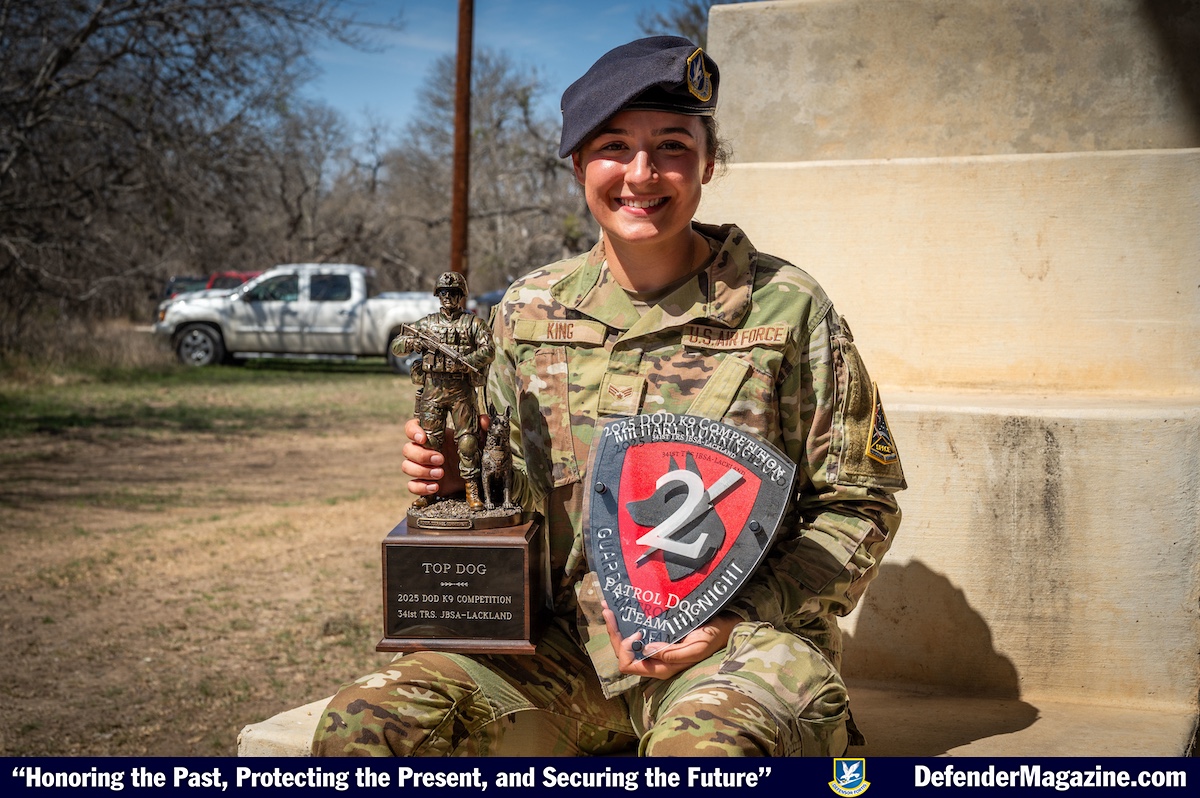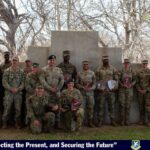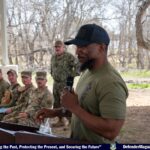
“This competition hasn’t happened in years, making selecting the teams challenging,” said Master Sgt. David Garver, Air Force Military Working Dog Program Manager. “Each branch held their own selection processes, and it was a highly competitive field.”
The two-day event tested teams in obedience, detection for narcotics and explosives, and concluded with an Iron Dog 10k ruck march — all designed to mirror the real-world missions military working dogs and handlers face.
Among the competitors was Senior Airman Anna King from Patrick Space Force Base, Florida, who took home the Top Dog award.
“I was extremely proud of my dog,” said King, originally from Kentucky. “She exceeded my expectations, and I know my family back home will be excited when I tell them.”
King described the competition as physically and mentally demanding, especially with the high standards set in each category.
“The first day we went through obedience, bite work and detection,” she said. “My dog did incredibly well, especially since much of it was off leash. The 10K ruck march was tough, but she kept her pace and regulated her temperature. I couldn’t have asked for a better performance.
The competition wasn’t just about winning—it was about bringing handlers together across the Department of Defense.
“Everybody did such an amazing job,” King said. “I’m grateful to be part of such a close-knit community where different branches and even civilian agencies can come together, share knowledge, and push each other to be better.”
One of the event’s most notable attendees was Retired Senior Chief Petty Officer Ekali Brooks, United States Navy, who won Top Dog in 2012 during the last DoD K-9 Competition.
“This is something that should happen every year. These handlers and their dogs put in countless hours of training, and this competition allows them to showcase those skills in a real-world setting,” Brooks said. “In 2012, I won first place in detection and patrol against 46 dog teams from different branches. It’s great to see this event making a comeback, even with a smaller group. This is just the seed to get the competition back to where it needs to be—bringing branches together and sharing skills.”
Brooks also emphasized the importance of continuous training and competition in preparing handlers and their military working dogs for real-world missions.
“The 10K ruck march is no joke,” Brooks added. “Handlers and their dogs push through exhaustion to prove their endurance and resilience. Every part of this competition mirrors what they might face in a deployment.”
Among other competitors was Cpl. Caden Villegas, U.S. Marine Corps who flew in from Hawaii for the competition.
“I only found out I was selected about two weeks ago, so I could have prepared a little more,” Villegas admitted. “But the experience has been incredible. The obstacle course, patrol work, and building searches really tested us. The detection portion was tough, but that’s what makes it a great competition—it challenges you.”
Villegas, who competed alongside three other Marine handlers, emphasized the importance of bringing back events like this.
“This isn’t just about morale — it’s about networking and building stronger teams,” he said.
The competition included 18 teams representing the Air Force, Marine Corps, Army, Navy, and civilian agencies.
Master Sgt. David Garver explained the significance of reviving the competition after more than a decade.
“Military Working Dogs train rigorously and continuously develop their skills and bond with their handlers,” Garver said. “Events like these foster morale, encourage networking, and prepare teams for joint operations in deployed environments.”
Organizers hope to reestablish the competition as an annual event to reinforce teamwork, readiness, and joint-service collaboration across the DoD’s Military Working Dog community.

